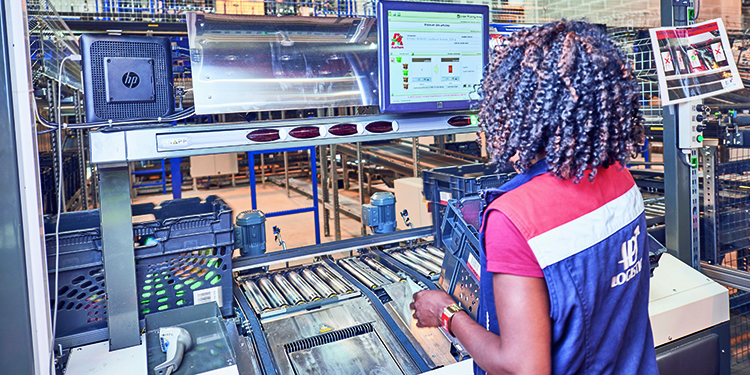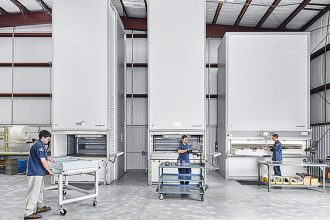Six Ways Automation Addresses Old And New Labor Issues

Staffing distribution centers and warehouses was challenging even before COVID-19 emerged in 2020, as unemployment rates have remained historically low over the past several years while competition for scarce workers drove wages increasingly higher. With the onset of the pandemic and the numerous health and safety measures operations have had to implement in order to reduce the risks of their employees contracting the virus while on the job, many companies have accelerated their investments in automation and other emerging technologies. There are many reasons for this shift toward such solutions, as explored in a recent MHI Solutions magazine article, “Automation Is Key to Addressing Labor Issues—Both Old and New,” produced by MHI’s Solutions Community. Six such motivations are detailed in the piece:
- Shortage of Qualified Labor. Although unemployment has risen significantly since the emergence of the coronavirus-induced recession, those seeking jobs primarily come from hard-hit sectors such as foodservice, travel and lodging. While those people may take a warehousing job in the short-term, they’re likely to return to their field when those sectors rebound. Automation provides a reliable, longer-term solution to what continues to be an on-going challenge: filling jobs in warehousing and distribution with qualified labor.
- Worker Retention Challenges. Investing both time and resources into recruiting and training workers—particularly those who aren’t interested a career in warehousing—is a waste. Even before the pandemic, companies struggled to retain employees because competition for labor was so fierce, workers would often jump from one warehousing job to another down the street for as little as a $0.50/hour pay increase. Adding automation to handling processes can be a better return on investment when faced with high employee turnover.
- Social Distancing Accommodations. To safeguard the health and wellbeing of their employees against the risk of viral transmission, operations are adjusting shifts and staffing levels, as well as changing their layouts and work processes to eliminate crowded aisles. Adding automated goods-to-person picking systems—where workers are spaced apart at separate workstations divided by clear barriers and items are presented to them—increases throughput while minimizing contact.
- Increased Throughput with Fewer Employees. Companies that had already invested in automated systems were able to continue functioning, even during the spring 2020 shutdowns, albeit at reduced capacity. Utilizing automatic guided vehicles (AGVs), autonomous mobile robots (AMRs), vertical lift modules (VLMs), automated storage and retrieval systems (ASRS), and carousels enabled items to be delivered directly to pickers. Removing travel to and from picks not only increased those operations’ productivity, but it also prevented cross-contamination by reducing the risk of human interaction.
- Adaptability to Changing Market Dynamics. Operations that used to be able to hire additional labor to handle peak volumes during the holiday season, for example, are having a much harder time doing so now. According to the 2020 MHI Annual Industry Report, 73% of respondents report that it usually takes more than 30 days to fill an open position. Further, 78% say high competition for labor is a primary challenge, with 71% reporting that finding talent is either extremely or somewhat challenging. With automation, particularly flexible solutions that can easily scale up to meet an increase in volumes, companies can remain competitive without relying on scarce or unavailable labor.
- Geographic Diversification. In the earliest days of e-commerce, many operations utilized a single, centralized distribution center to fill orders. Today, most use multiple locations to provide faster delivery regionally. However, given that—during the COVID-19 pandemic—decisions to shut down or limit businesses’ operations were made at the state and local level, more operations are looking to further diversify their footprint with automated micro-fulfillment centers. Highly automated and minimally staffed, these facilities enable greater flexibility while ensuring that a shutdown in one area doesn’t cripple an entire distribution or fulfillment network.
Looking for more ideas about how automation can help your operation respond to workforce challenges, both during and after the pandemic? Read the full article and connect with the members of the MHI Solutions Community—including suppliers, integrators, consultants, media, academia and users—who collaborate on solutions worldwide and in virtually every major manufacturing and distribution sector. They represent the industry’s thought leaders on automation, software, hardware, equipment and services that support a fully integrated supply chain.



